A Collection of Birch Assemblages at the Center Gallery in Glen Arbor, Michigan.
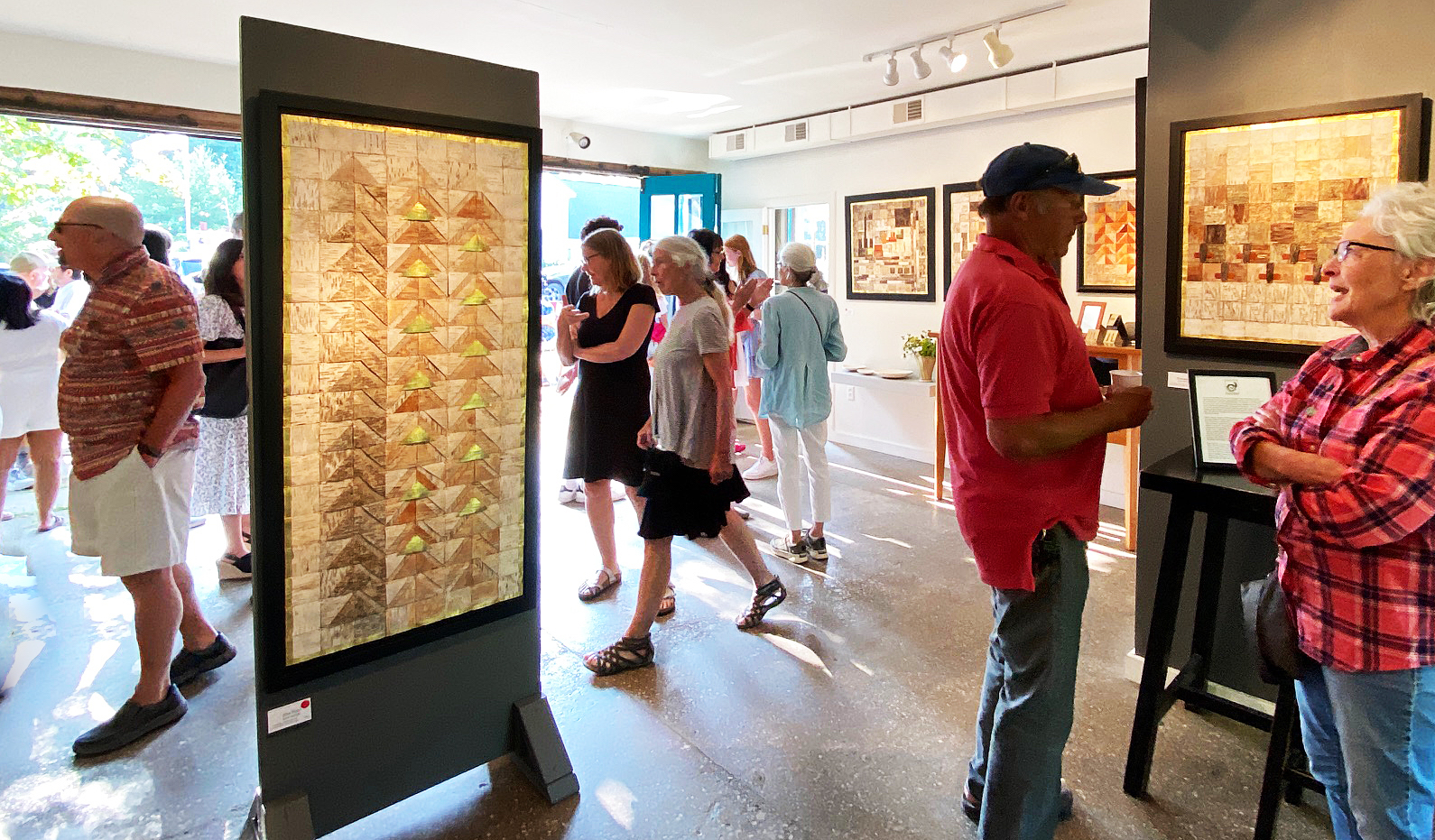
Installation image, work by Susan Yamasaki at Center Gallery, Glen Arbor, 2023 Image courtesy of Susan Tusa
It has been nineteen years since Susan and Taro move from Birmingham, Michigan, to the glacial moraine in Leelanau County, where their property rises upward to look out over Lake Michigan and the Sleeping Bear Dunes. The forest comprises thick oaks, pines, black ash, beech/maple, and birch. A devastating storm in 2015 snapped birch trees in half, and Susan foraged her land to discover this bark from birch trees with a wide diversity of color and texture.
The following birch assemblages are a sample of what is now on display at Center Gallery, opening August 4 -10th, 2023, in Glen Arbor, Michigan.
She says in her statement, “My heart would break as I would step over the wreckage of trees whose lives had ended. But upon taking a closer look, I could see that the bark of the birch beautifully reveals the experience of the tree. I chose to use the bark of the fallen birch to make my art. The panels become sacred objects, honoring the link between earth and sky. They pay homage to the struggle and adaptability of each tree.”
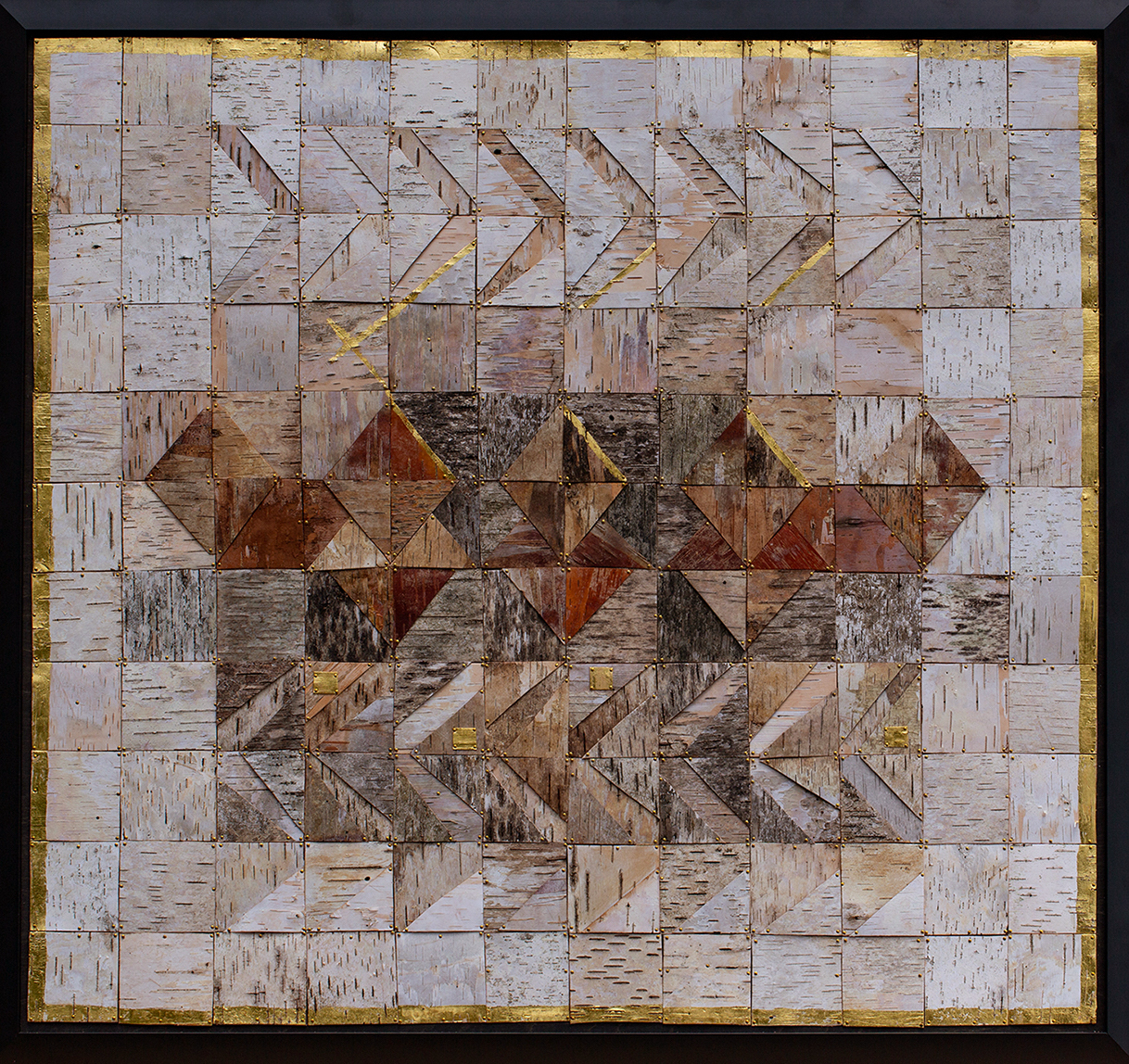
Susan Yamasaki, Shift, 26 x 31″, Assemblage, 2023 Image courtesy of Taro Yamasaki.
The assemblage is composed formally on a grid and is abstract. Shift has chevrons on the top and bottom of the center staged rectangle, and the overall pieces are squares with bits and pieces of gold leaf as a border and a punctuated black frame.
Assemblage is the art of creating a three-dimensional sculptural composition from found objects. One of the best-known assemblage artists of the 20th century was the Russian-born American sculptor Louise Nevelson. She transformed these found objects into large wall-mounted and free-standing reliefs, which often take the form of stacked boxes and compartments. Once assembled, the sculpture was spray-painted with a single color – usually black, white, or gold – to unify the complex sculptural elements and bring symbolic meaning.
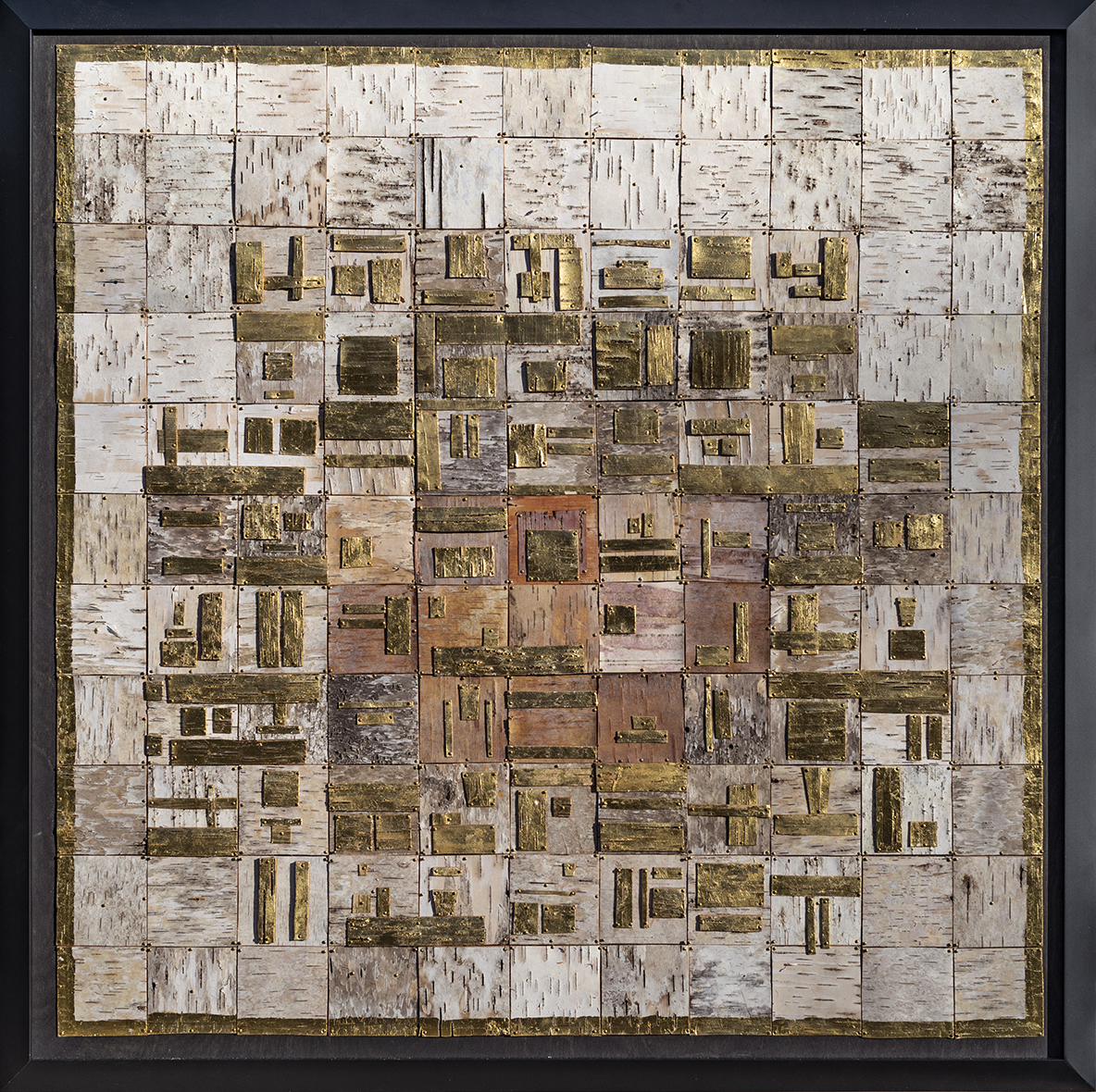
Susan Yamasaki, Hieroglyphs, 35 x 35″, Assemblage, 2021. Image courtesy of Taro Yamasaki.
It is easy to say squares and rectangles dominate the motifs in a background of white in Hieroglyphs, as the square abstraction surrounds a cluster of gold leaf objects. Found in ancient Egyptian art, the stylized shapes represent a word, syllable, or sound, where gold is designed to elevate the symbol’s value.
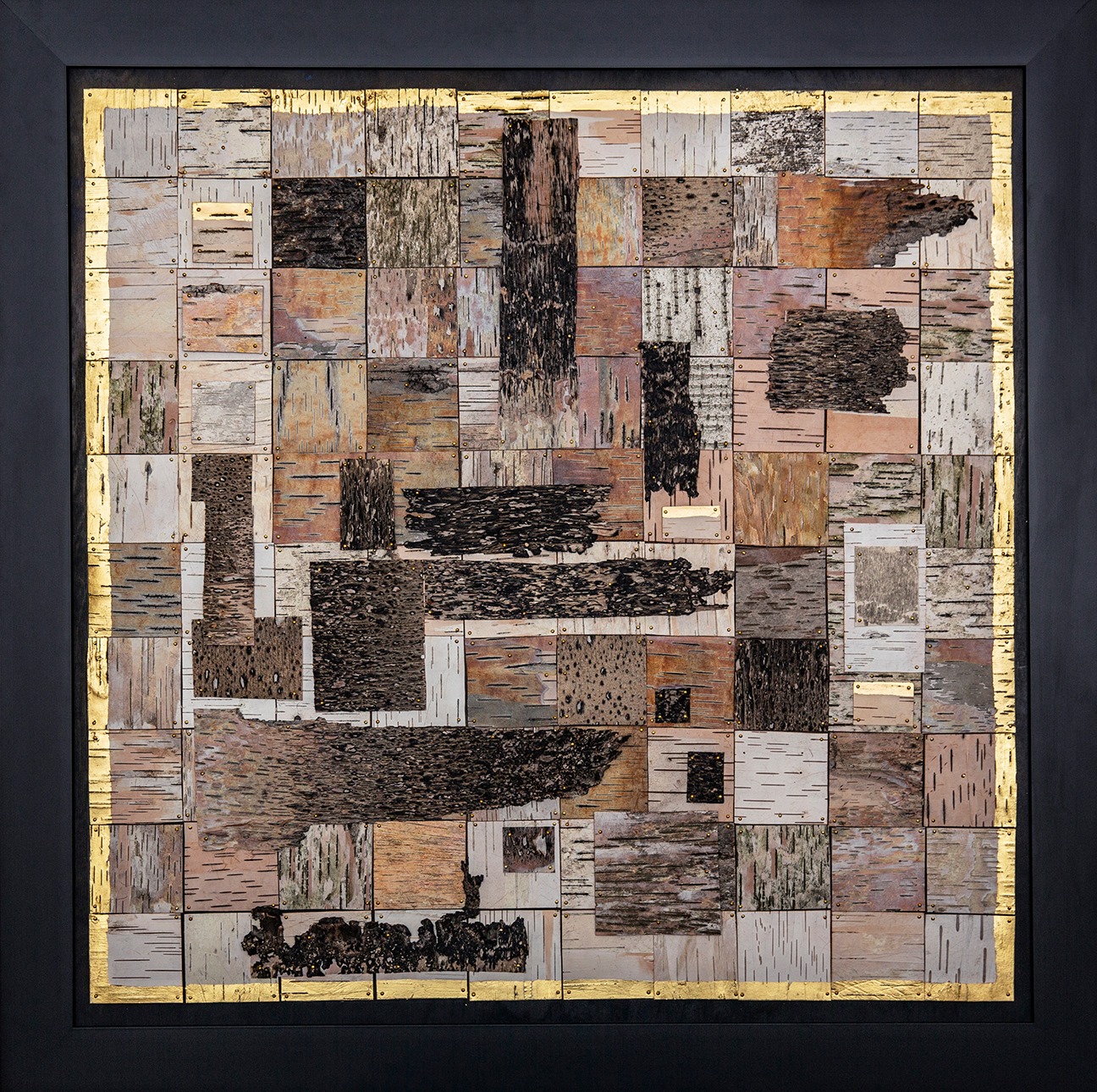
Susan Yamasaki, Burnt, 34 x 34″, Assemblage, 2020. Image courtesy of Taro Yamasaki.
In the work, Burnt, although its background is a field of squares, an overlapping darkened color represents the birch that was touched by fire. The effect contrasts the composition and moves the action of larger pieces of bark from left to right, repeating the small horizontal lines in many of the squares.

Susan Yamasaki, Underbark, 35 x 30″ Assemblage, 2023, Image courtesy of Taro Yamasaki.
The image Underbark, illustrates how the artist handles color (red and orange), which opens the door to expanding the option to future compositions. It is noticeable that Susan Yamasaki has a comfort level using a grid-based composition of squares and working overtime on variations of well-established designs of gold leaf borders and black frames until she gets to a point where there are options that present themselves.
Until now, she has created a very personal oeuvre: abstract assemblages based on her relationship with material that is part of her natural environment, but raises the question, where will the work go from here?
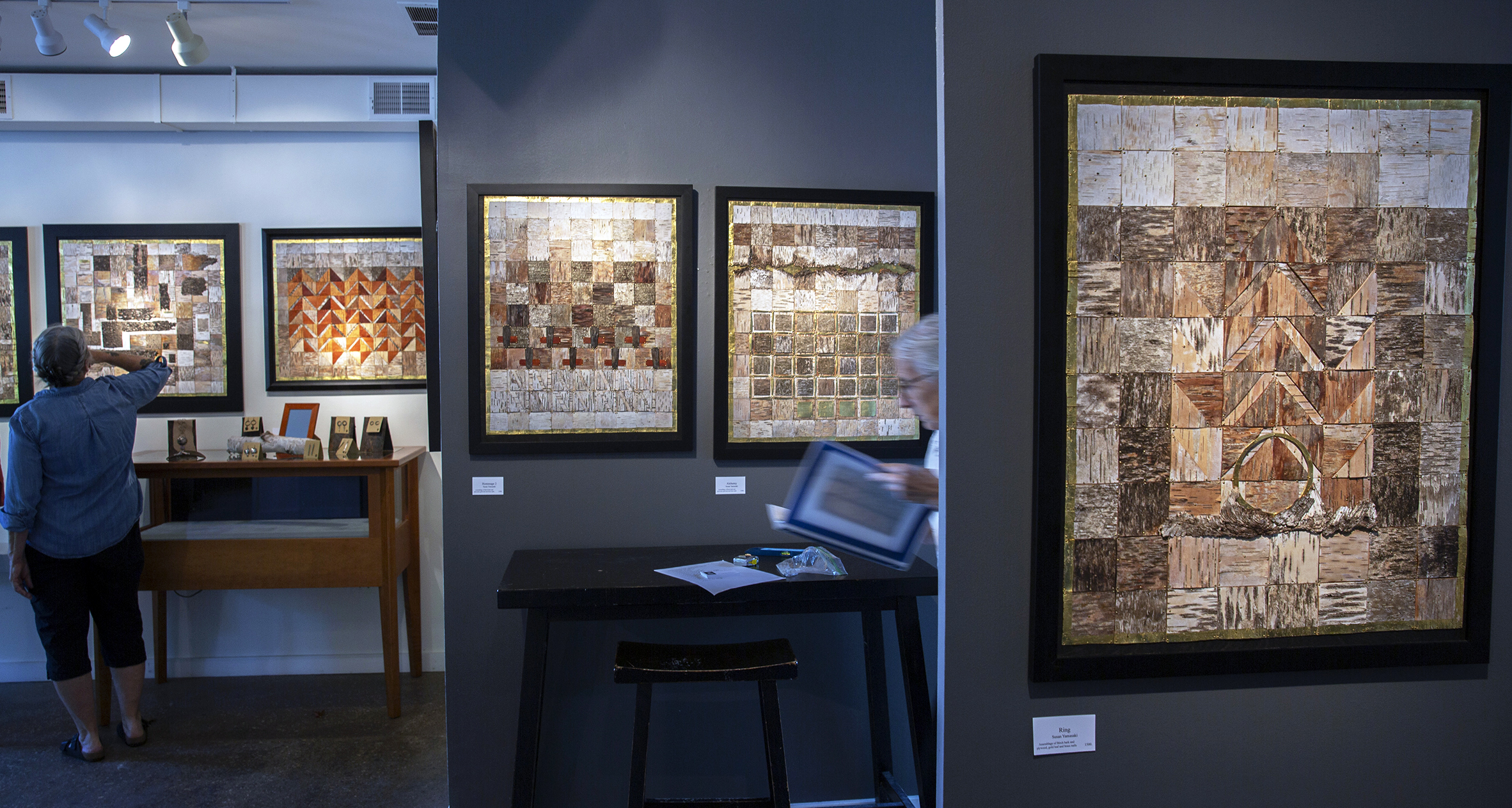
Susan Yamasaki, Installation, Assemblages, 2023. Image courtesy to Taro Yamasaki.
Susan Yamasaki studied art at Michigan State University and then finished at Wayne State University, ultimately with a degree in Art History. She earned a teaching certificate and taught science at Roeper School in Suburban Detroit. After moving to northern Michigan, she taught at a public Montessori school in Traverse City.
Susan Yamasaki, Birch Assemblages, Center Gallery in Glen Arbor, Michigan, August 4 – 10, 2023.
